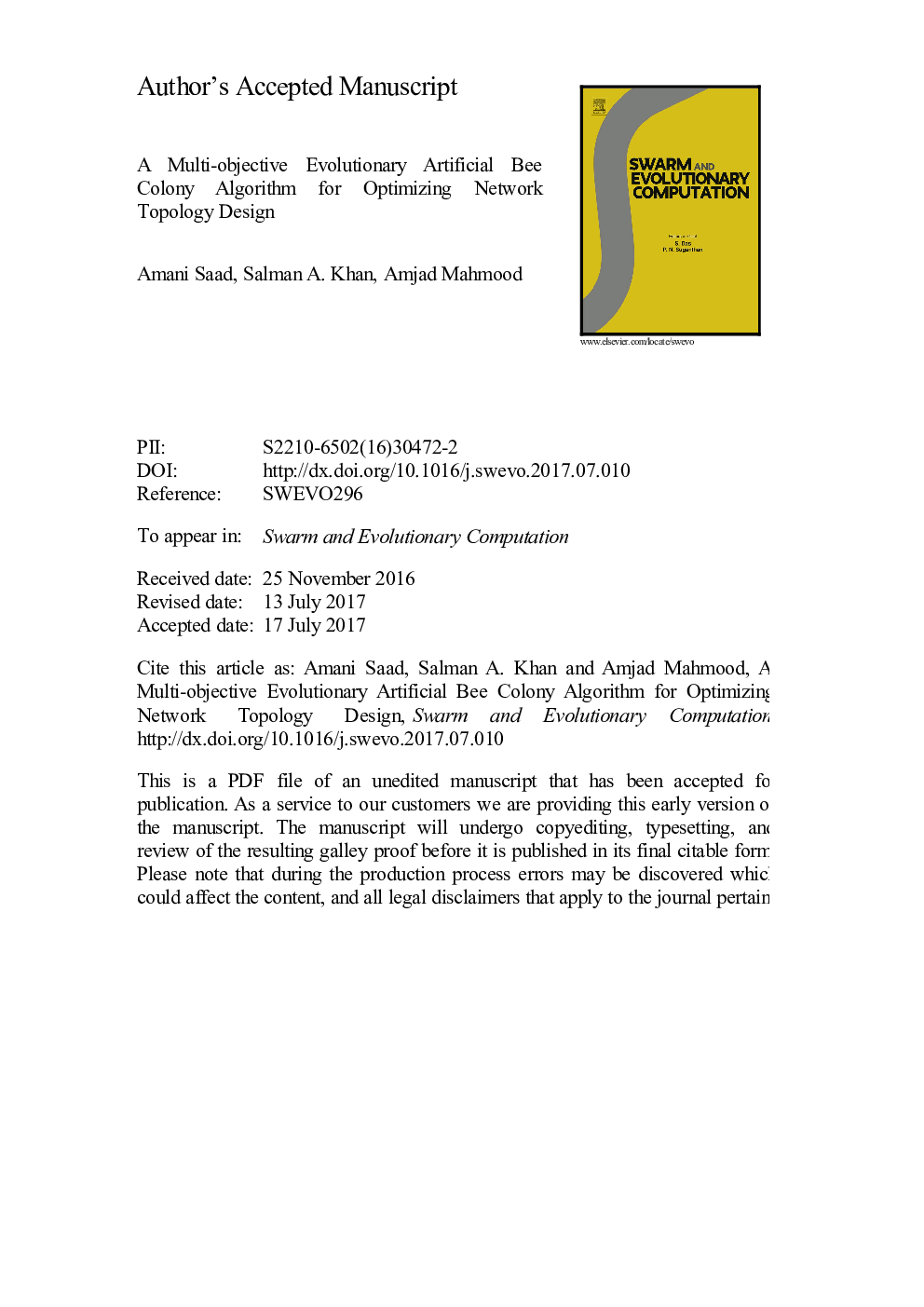| کد مقاله | کد نشریه | سال انتشار | مقاله انگلیسی | نسخه تمام متن |
|---|---|---|---|---|
| 6903188 | 1446751 | 2018 | 42 صفحه PDF | دانلود رایگان |
عنوان انگلیسی مقاله ISI
A multi-objective evolutionary artificial bee colony algorithm for optimizing network topology design
ترجمه فارسی عنوان
یک الگوریتم کلونی تکاملی چندگانه زنبور عسل برای بهینه سازی طراحی توپولوژی شبکه
دانلود مقاله + سفارش ترجمه
دانلود مقاله ISI انگلیسی
رایگان برای ایرانیان
کلمات کلیدی
الگوریتم کلونی زنبور عسل مصنوعی، برنامه ریزی هدف طراحی توپولوژی شبکه، بهینه سازی چند هدفه، تکامل شبیه سازی شده،
موضوعات مرتبط
مهندسی و علوم پایه
مهندسی کامپیوتر
علوم کامپیوتر (عمومی)
چکیده انگلیسی
The topological design of a computer communication network is a well-known NP-hard problem. The problem complexity is further magnified by the presence of multiple design objectives and numerous design constraints. This paper presents a goal programming-based multi-objective artificial bee colony optimization (MOABC) algorithm to solve the problem of topological design of distributed local area networks (DLANs). Five design objectives are considered herein, namely, network reliability, network availability, average link utilization, monetary cost, and network delay. Goal programming (GP) is incorporated to aggregate the multiple design objectives into a single objective function. A modified version of MOABC, named as evolutionary multi-objective ABC (EMOABC) is also proposed which incorporates the characteristics of simulated evolution (SE) algorithm for improved local search. The effect of control parameters of MOABC is investigated. Comparison of EMOABC with MOABC and the standard ABC (SABC) shows better performance of EMOABC. Furthermore, a comparative analysis is also done with non-dominated sorting genetic algorithm II (NSGA-II), Pareto-dominance particle swarm optimization (PDPSO) algorithm and two recent variants of decomposition based multi-objective evolutionary algorithms, namely, MOEA/D-1 and MOEA/D-2. Results indicate that EMOABC demonstrated superior performance than all the other algorithms.
ناشر
Database: Elsevier - ScienceDirect (ساینس دایرکت)
Journal: Swarm and Evolutionary Computation - Volume 38, February 2018, Pages 187-201
Journal: Swarm and Evolutionary Computation - Volume 38, February 2018, Pages 187-201
نویسندگان
Amani Saad, Salman A. Khan, Amjad Mahmood,
